Clean cut: BMW-i4 is set to electrify
Described as the car that could be the most important BMW of the modern age, the i4 concept shines bright on prioritising environmental wary and clean design
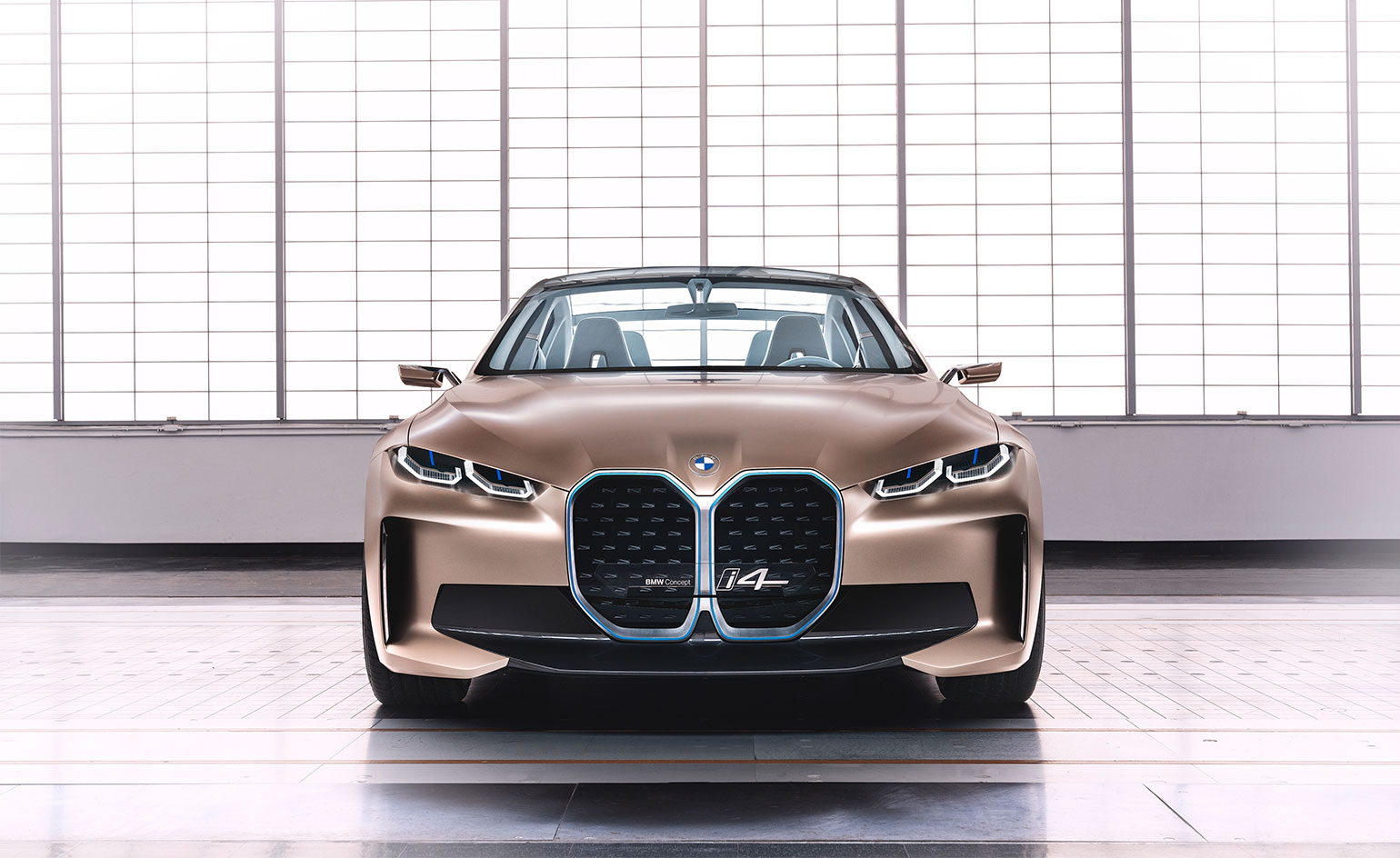
For a couple of days in early Spring, the doors to BMW's Designworks subsidiary have been thrown open out of hours to give North America an early preview of the new BMW Concept i4. This car is the latest in a long line of conceptual visions that are intended to distil the German company’s future thinking into physical form. It's also substantially production ready, with a 2021 on-sale date mooted for a car that could be the most important BMW of the modern age.
The Concept i4 is characterised by its very clean, pure lines, with a forward, dynamic thrust. ‘We wanted to make sportiness more welcoming and less aggressive,’ says Kai Langer, Head of BMWi Design. The purity of line and proportion shares a substantial amount with the forthcoming BMW 4-Series, although some of the detailing – the blue accents, minimal wing mirrors, faceted geometric wheels with angular aluminium blades for better aerodynamics and rear diffuser are taken straight from established ‘i’ design language.
How many of these details will survive to production in unclear – the light clusters are show car sleek but not yet legislatively feasible, while the interior is a rich symphony of light coloured materials, geometric patterns and moody lighting. The latter is particularly pronounced when switching between modes, from Comfort to Eco to Sport, with the entire interior lighting scheme flashing in synch with the shifting dashboard display, before settling back into a more ambient background shade. The dashboard itself adds a twist to the current trend for widescreen flat displays, with a subtly curved screen sitting atop a low dash, akin to a flagship flatscreen TV in an urban loft. Buttons and dials have been pared back, with the rotary iDrive controller rendered in crystal, while the cabin materials run a soft gamut through bronze, silver, cream and grey.
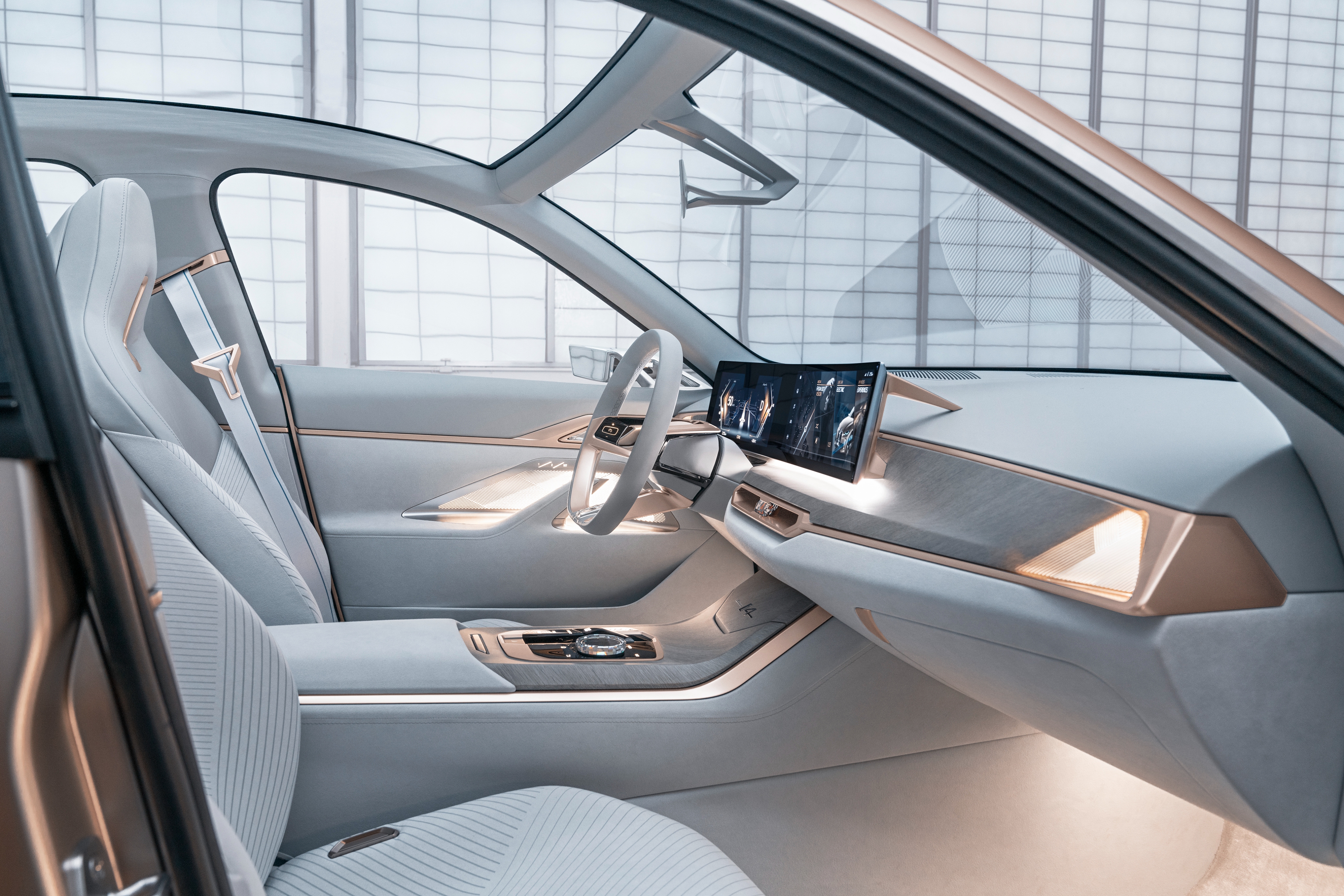
‘We wanted to show how the progressiveness of ‘i’ and electric mobility could fit with our 100 years of heritage,’ says Langer. ‘It’s why we chose a 4-door coupe – it’s old school perfectly matched with new school.’ At the front, the i4 offers up a new interpretation of the company’s shape-shifting double-kidney grille. ‘We have no need for an air intake for cooling at the front,’ Langer says, ‘it’s just for aerodynamics. Instead, we re-integrated the function of the kidney into what we call an ‘intelligence window’ – it contains all the sensors you need for modern driving. It translates the feature into the digital world’
Arguably, BMW’s i models haven’t been the runaway success the company hoped. The i3 and i8 were distinct and different, but despite a decade-long head start, they’ve been eclipsed by other, more conservative EVs. The design team is clear about their mission. ‘We want to reach a lot more customers with the i4,’ says Kampf, ‘we have to be careful about making bold statements, but we also have to live up to our reputation. This car is playing in a different league.’
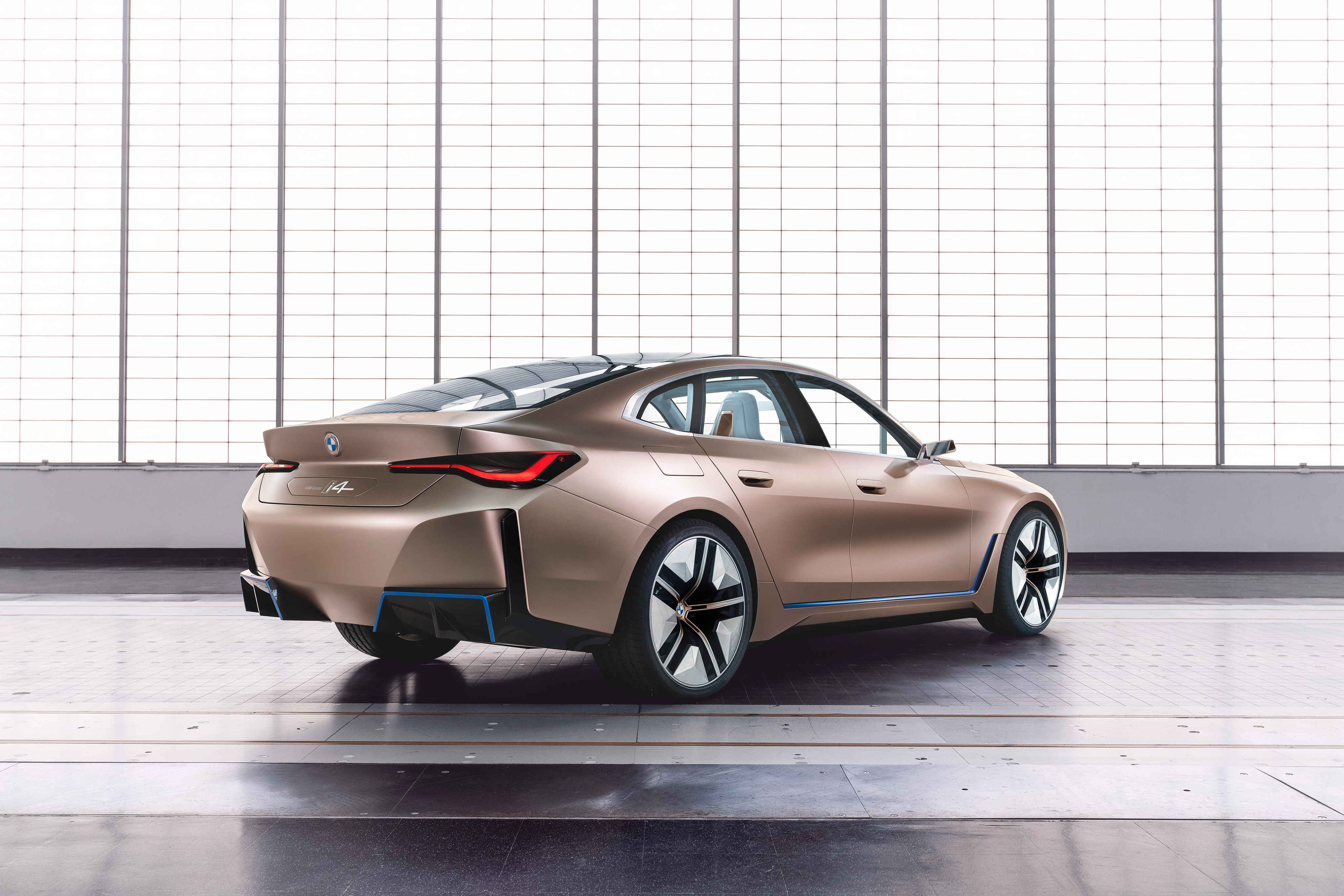
Designworks plays an important role in shaping BMW's future. ‘We’re an outside company that has to provoke and challenge the parent company, we can ‘rattle the cage,’' says Holger Hampf, current president of this satellite studio, tucked away in a business park in 1000 Oaks, just north of Malibu. The company was acquired by BMW some 25 years ago and its influence on BMW Group design strategy has only grown. The studio has a close relationship with the nearby Art Center Pasadena, home to one of the US’s most prestigious transportation design courses. Past graduates include Chris Bangle, former BMW Group Chief of Design. His successor, current Design Chief Adrian van Hooydonk, also spent time at Designworks.
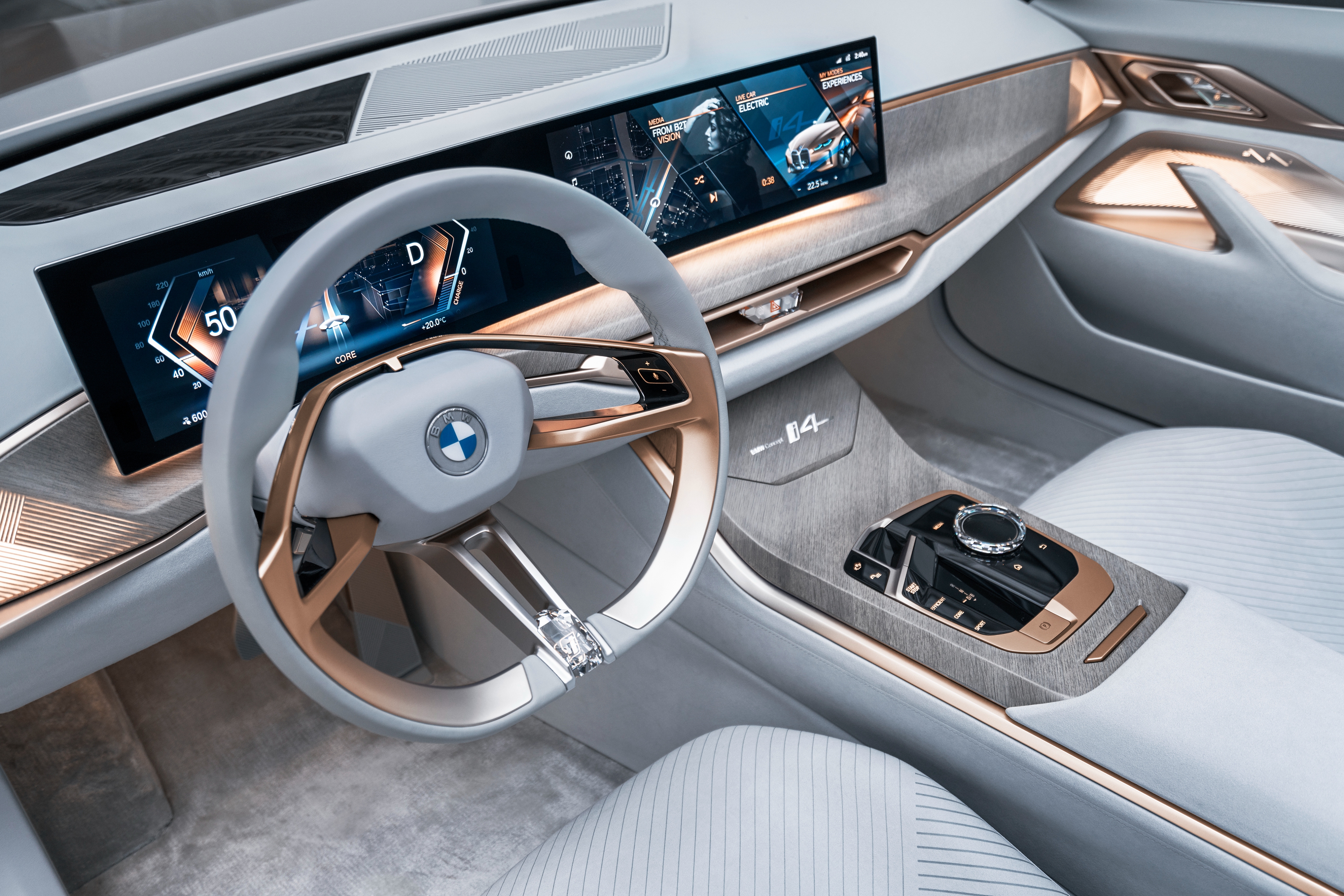
‘It used to be a secret lab that was hidden away,’ Hampf says, ‘but that’s changed as BMW is excited about having its own integrated design consultancy. These days, Adrian [van Hooydonk] puts us on strategic projects.’ Some 50% of the studio’s time is taken up by the BMW Group, with Designworks operations spread between the team of 80 in California, a Shanghai studio of 30 and another 40 people working alongside the several hundred designers at the main BMW studio in Munich. Designworks played a key role in the long genesis of BMW’s ‘i’ brand, shaping the Megacity Vehicle (MCV) at the turn of the last decade that paved the way for the pioneering BMW i3 of 2013. Surprisingly, their second largest client is the agri-industrial giant John Deere, as well as a host of tech firms, from start-ups to established players, and everything from aircraft interiors to superyachts.
Cars and mobility are still the heart of the operation. ‘LA is a very good place for us to be. It’s car culture, messy and creative. It inspires our people,’ says Hampf. The studios are smart and glossy, belying their location on a relatively non-descript industrial estate. Secret clearances abound, and the artfully scattered concept models in the reception areas only go on show once their embargos have long been put to bed. The real action happens behind closed doors. By contrast, the Concept i4 is out and about and interest in the production version is growing. With a mooted 600km range it could prove to be the car that puts BMW at the forefront of the electric revolution. ‘Sustainability isn’t just about recycling, it’s about being efficient, visually as well as physically,’ Langer says, ‘we have more intellectual depth at BMW - we don’t believe in a dystopian future.’
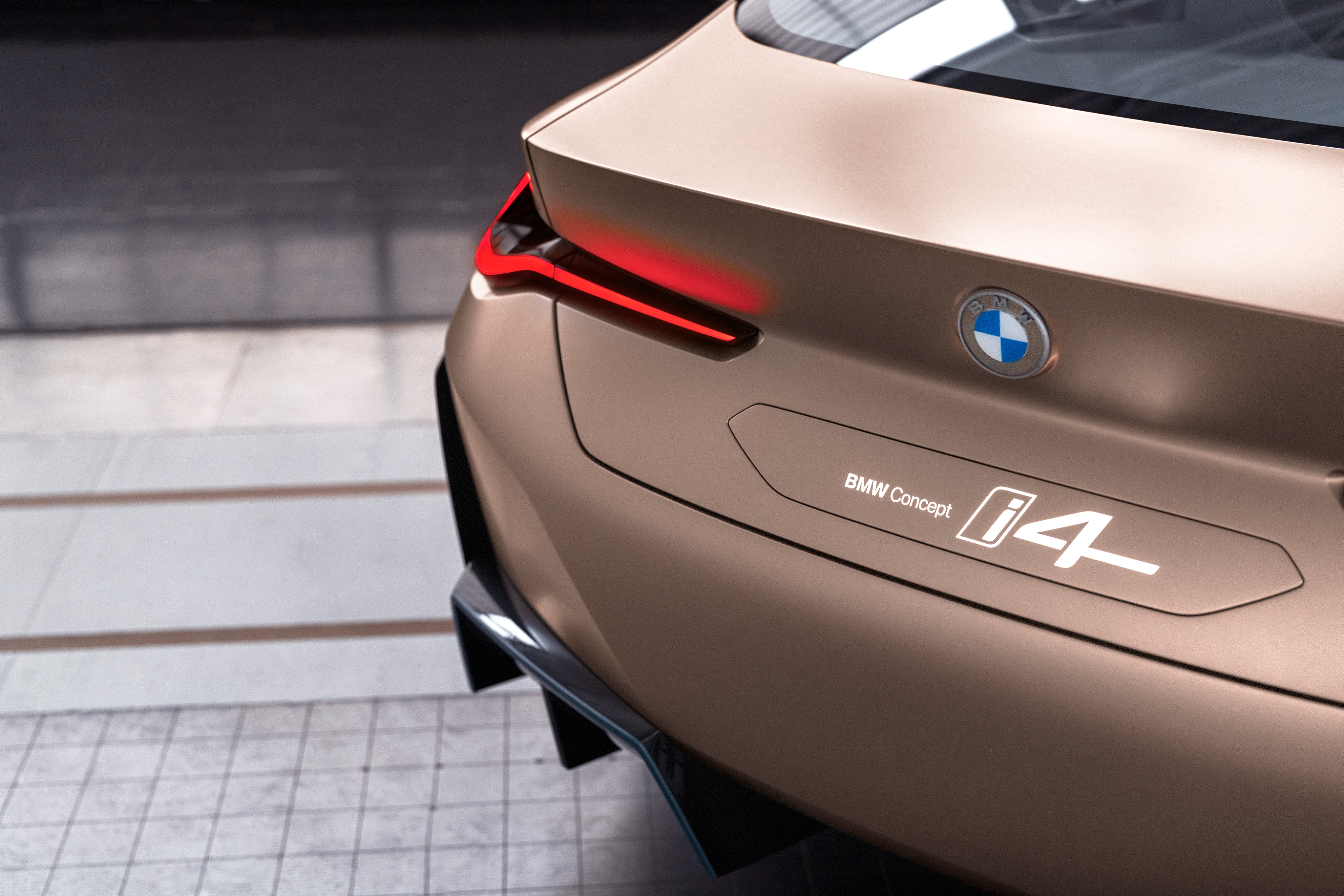
INFORMATION
Wallpaper* Newsletter
Receive our daily digest of inspiration, escapism and design stories from around the world direct to your inbox.
Jonathan Bell has written for Wallpaper* magazine since 1999, covering everything from architecture and transport design to books, tech and graphic design. He is now the magazine’s Transport and Technology Editor. Jonathan has written and edited 15 books, including Concept Car Design, 21st Century House, and The New Modern House. He is also the host of Wallpaper’s first podcast.
-
 Extreme Cashmere reimagines retail with its new Amsterdam store: ‘You want to take your shoes off and stay’
Extreme Cashmere reimagines retail with its new Amsterdam store: ‘You want to take your shoes off and stay’Wallpaper* takes a tour of Extreme Cashmere’s new Amsterdam store, a space which reflects the label’s famed hospitality and unconventional approach to knitwear
By Jack Moss
-
 Titanium watches are strong, light and enduring: here are some of the best
Titanium watches are strong, light and enduring: here are some of the bestBrands including Bremont, Christopher Ward and Grand Seiko are exploring the possibilities of titanium watches
By Chris Hall
-
 Warp Records announces its first event in over a decade at the Barbican
Warp Records announces its first event in over a decade at the Barbican‘A Warp Happening,' landing 14 June, is guaranteed to be an epic day out
By Tianna Williams
-
 Mercedes-Benz previews its next-gen people mover with an ultra-luxury EV concept
Mercedes-Benz previews its next-gen people mover with an ultra-luxury EV conceptThe Mercedes-Benz Vision V Concept is an art deco picture palace on wheels, designed to immerse passengers in parallel worlds as they travel
By Jonathan Bell
-
 2025 Seoul Mobility Show report: all that's new and notable
2025 Seoul Mobility Show report: all that's new and notableOpened at a time of high national drama, the 2025 Seoul Mobility Show has gone on to underscore Korea’s place at the cutting edge of the auto industry. Guy Bird was there
By Guy Bird
-
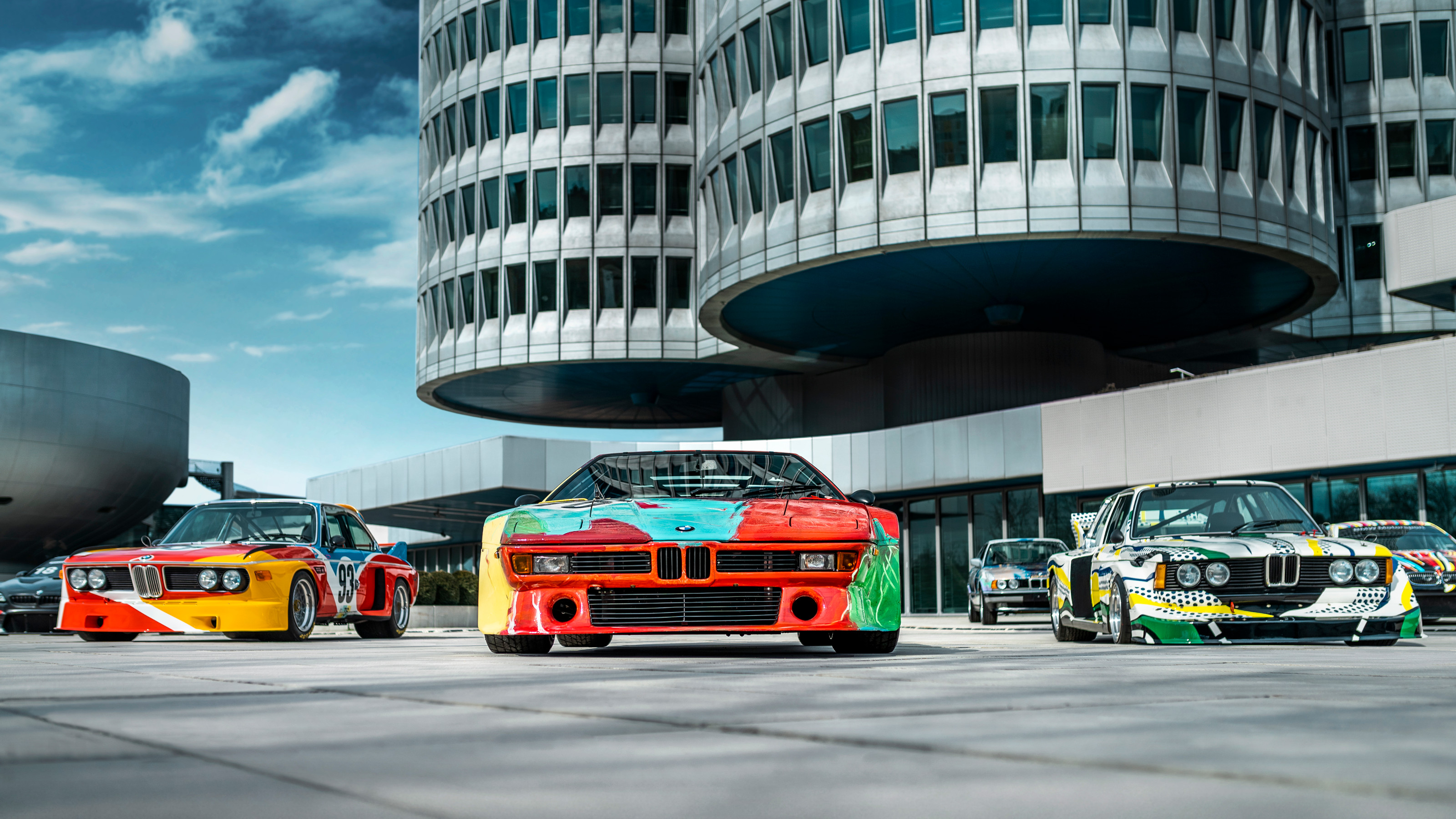 BMW celebrates half a century of its pioneering Art Car project with exhibitions and more
BMW celebrates half a century of its pioneering Art Car project with exhibitions and moreWe present a portfolio of the artists who have contributed to 50 years of BMW Art Cars, including Andy Warhol, John Baldessari, Jenny Holzer and David Hockney
By Jonathan Bell
-
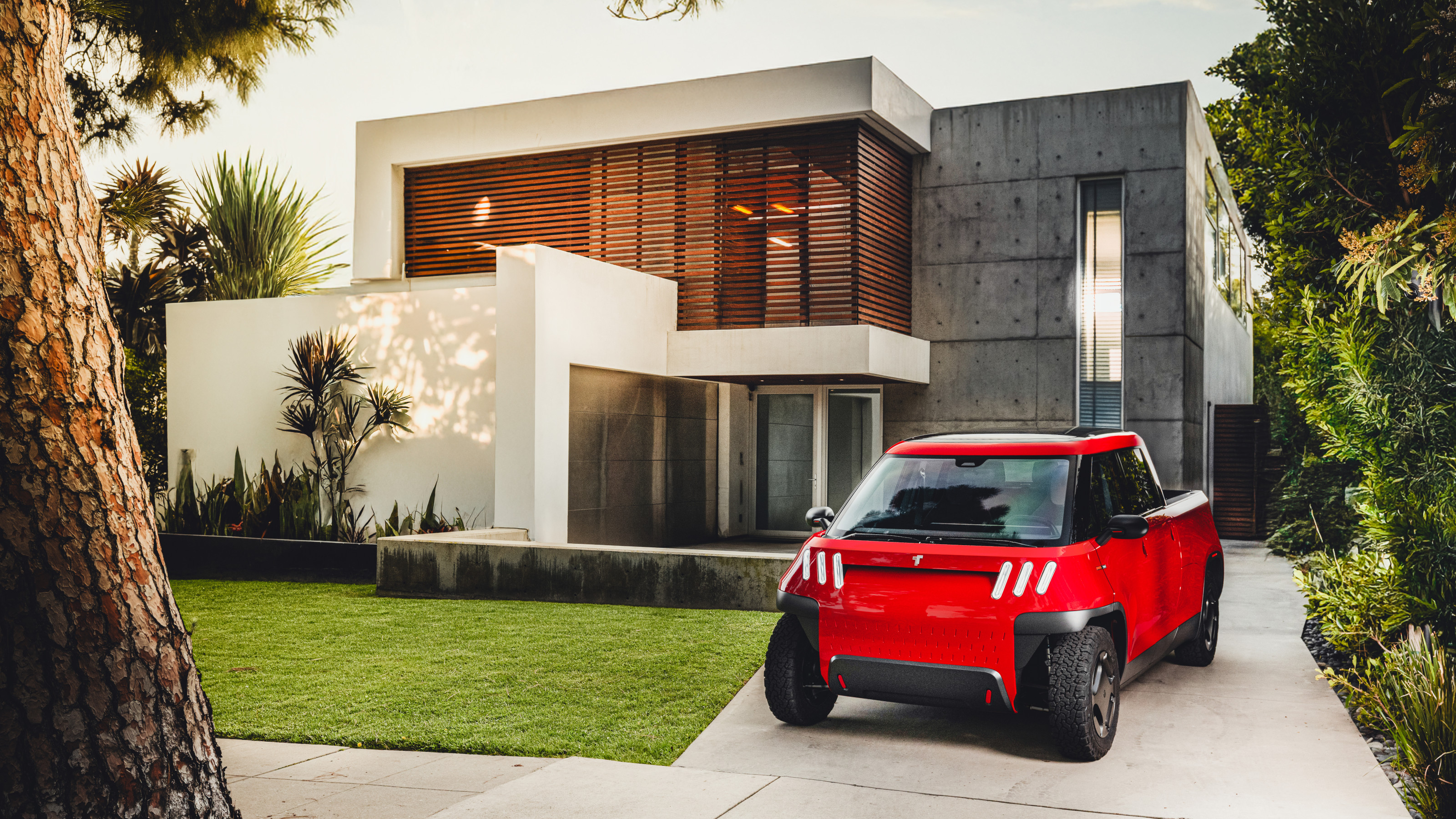 Meet the final drivable prototype of the Telo MT1 pickup truck, shaped by Fuseproject
Meet the final drivable prototype of the Telo MT1 pickup truck, shaped by FuseprojectThe Telo MT1 is a modestly scaled EV that turns the traditional all-American approach to pick-up truck design on its head
By Jonathan Bell
-
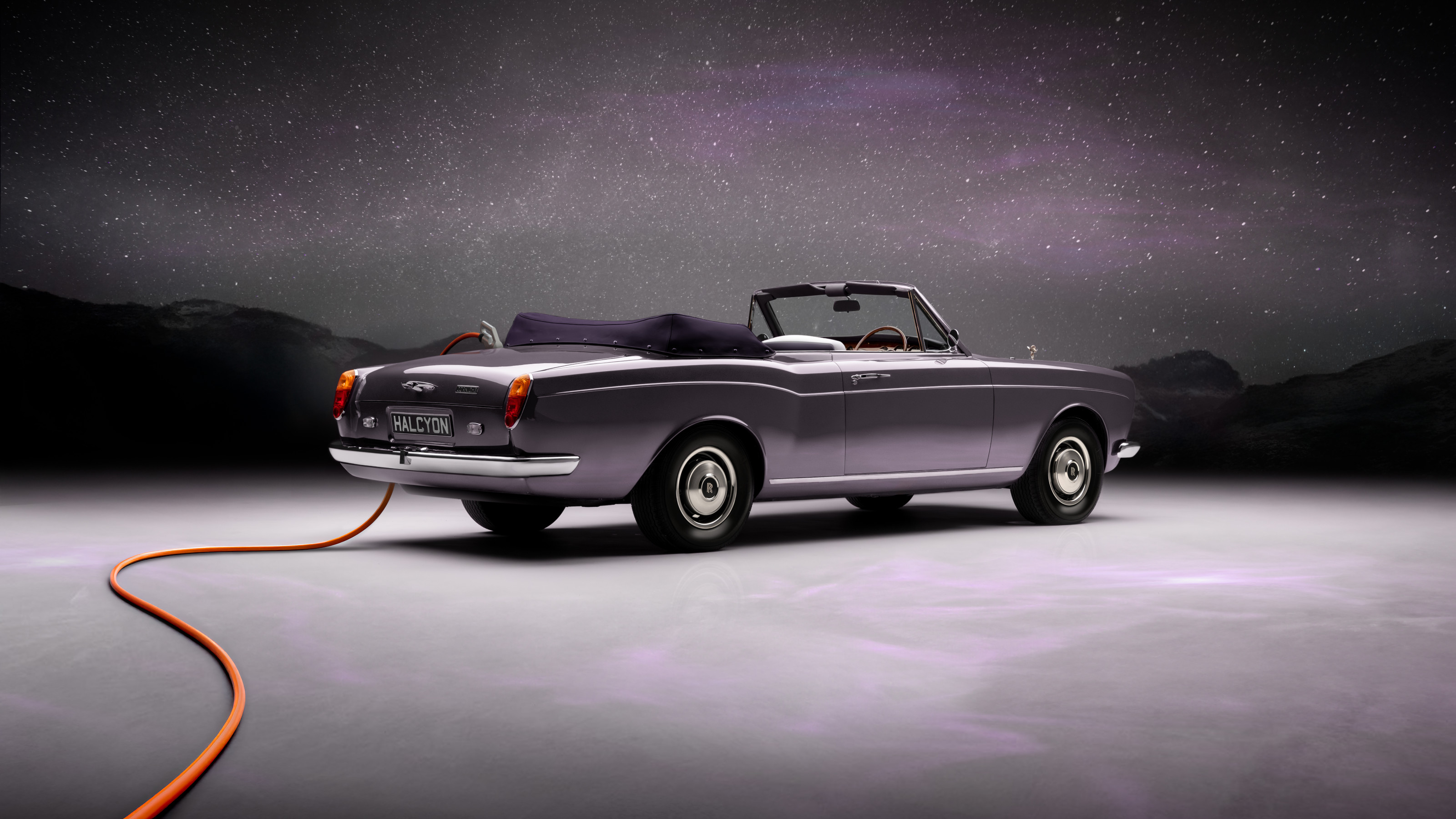 EV start-up Halcyon transforms a classic 1970s Rolls-Royce into a smooth electric operator
EV start-up Halcyon transforms a classic 1970s Rolls-Royce into a smooth electric operatorThis 1978 Rolls-Royce Corniche is the first fruit of a new electric restomod company, the Surrey-based Halcyon
By Jonathan Bell
-
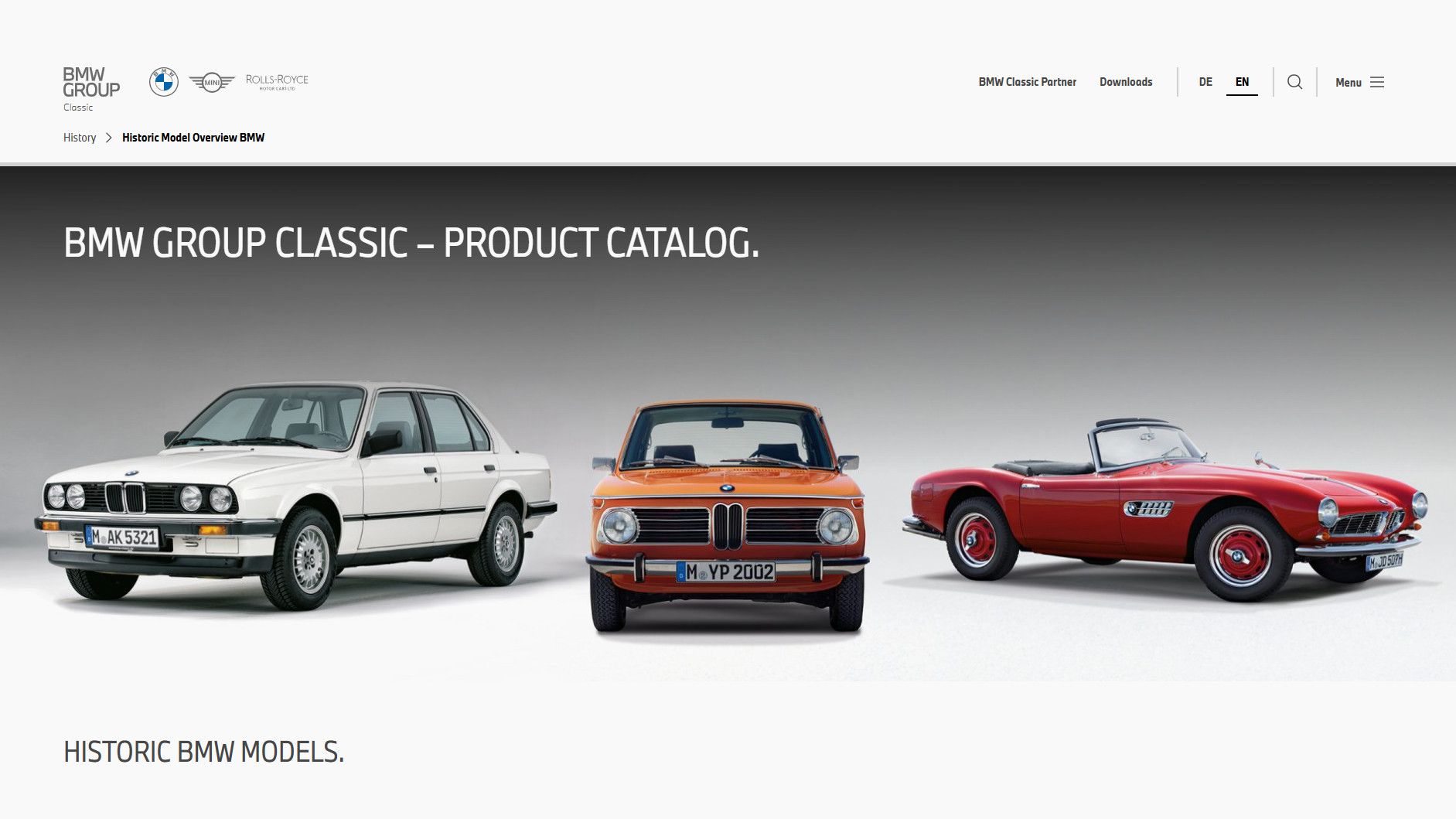 Peruse the new BMW Group Archive to explore the evolution of BMW design over the decades
Peruse the new BMW Group Archive to explore the evolution of BMW design over the decadesFor lovers of the marque, BMW’s commitment to online archiving is second to none. The latest website from the Bavarian manufacturer is this extensive visual catalogue of 80 years’ worth of BMW design
By Jonathan Bell
-
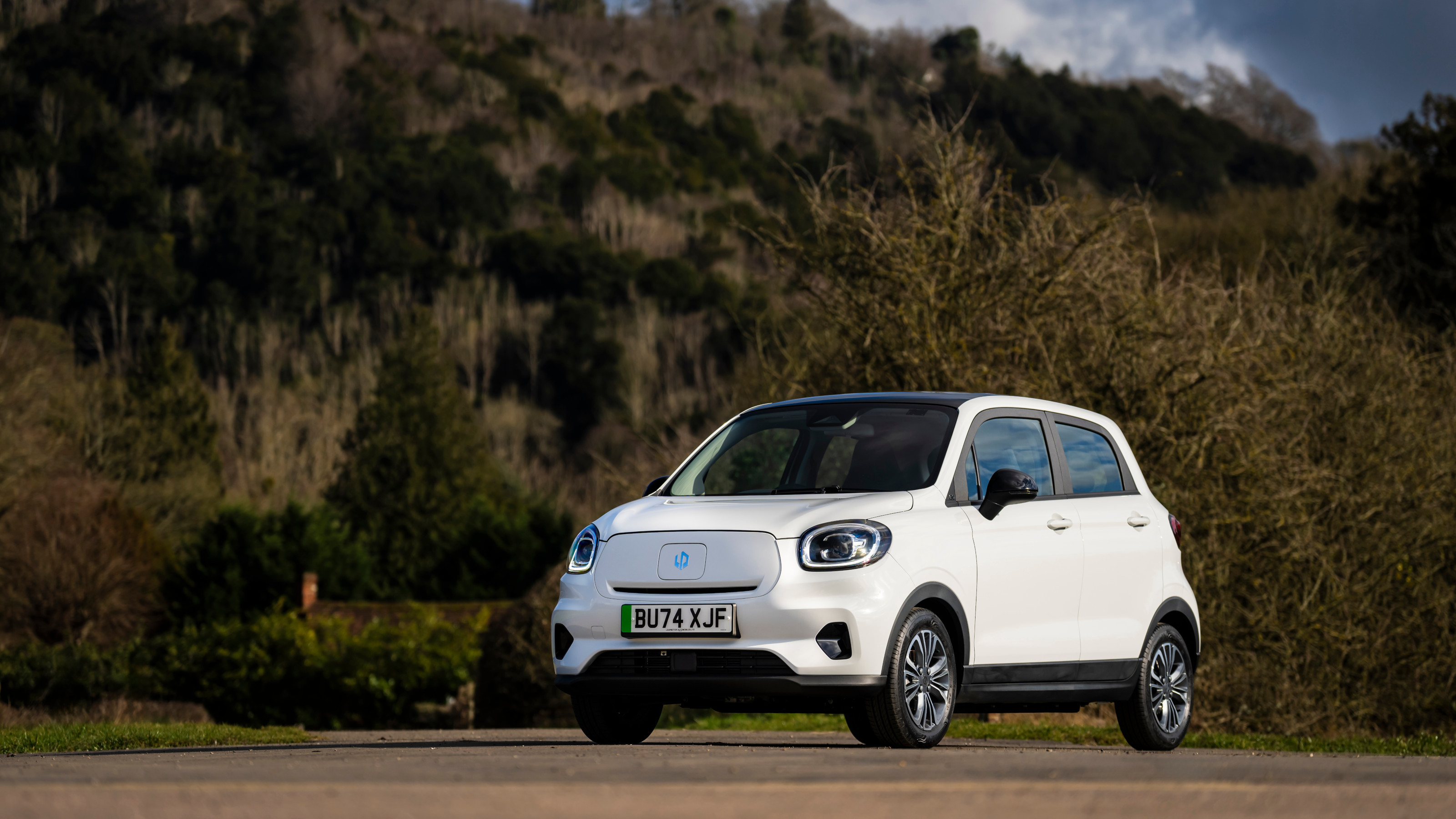 China’s Leapmotor pounces on the European car market with its T03 city car and C10 SUV
China’s Leapmotor pounces on the European car market with its T03 city car and C10 SUVLeapmotor’s tiny electric city car could be just the tonic for cramped urban Europe. We sample the T03 and its new sibling, the fully loaded C10 SUV, to see if the company’s value proposition stacks up
By Jonathan Bell
-
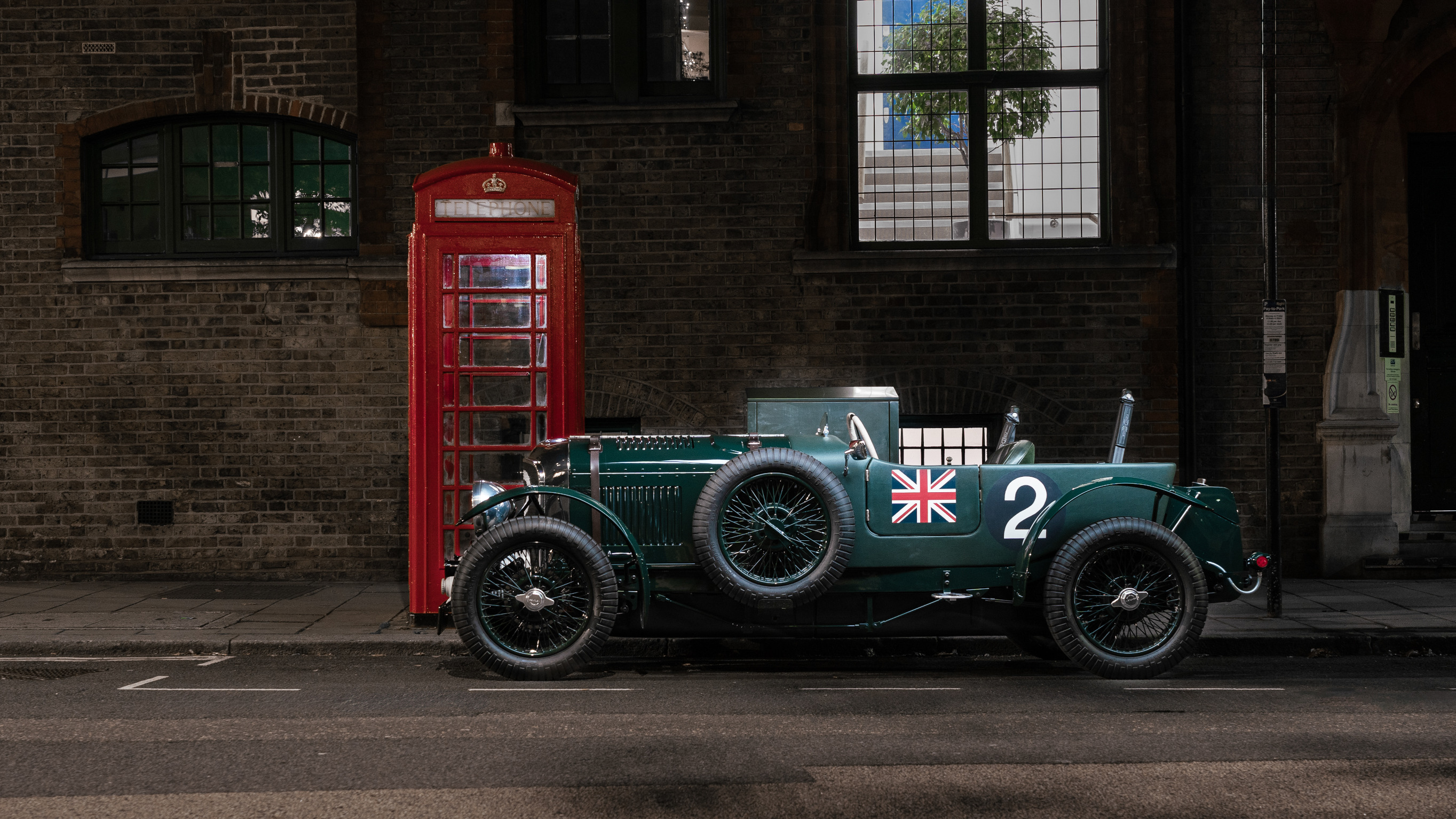 Wallpaper* takes the wheel of the Bentley Blower Jnr for a rich automotive experience
Wallpaper* takes the wheel of the Bentley Blower Jnr for a rich automotive experienceHedley Studios has shrunk the mighty Bentley Blower into this all-electric, road-legal barnstormer. We take it to the streets of London
By Jonathan Bell